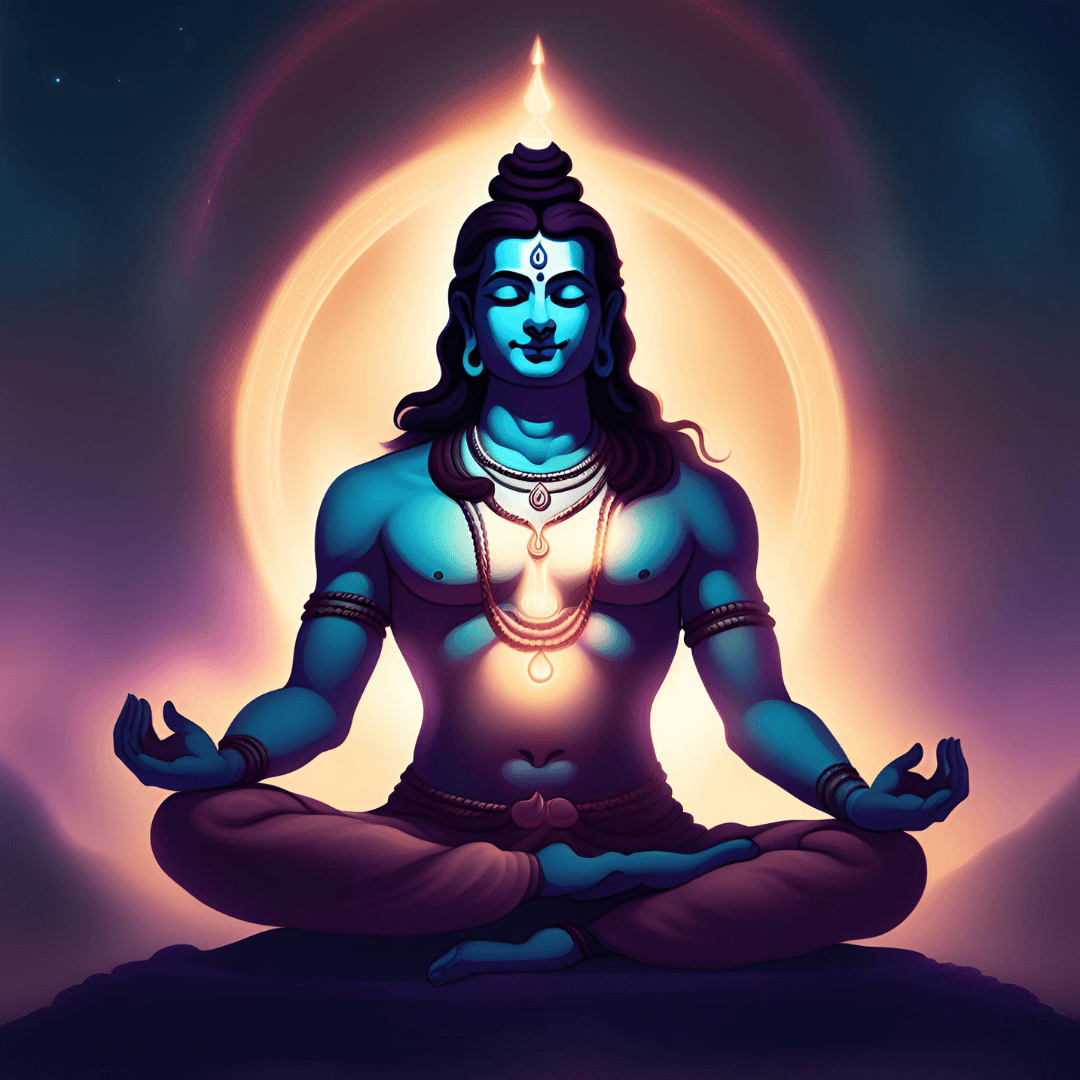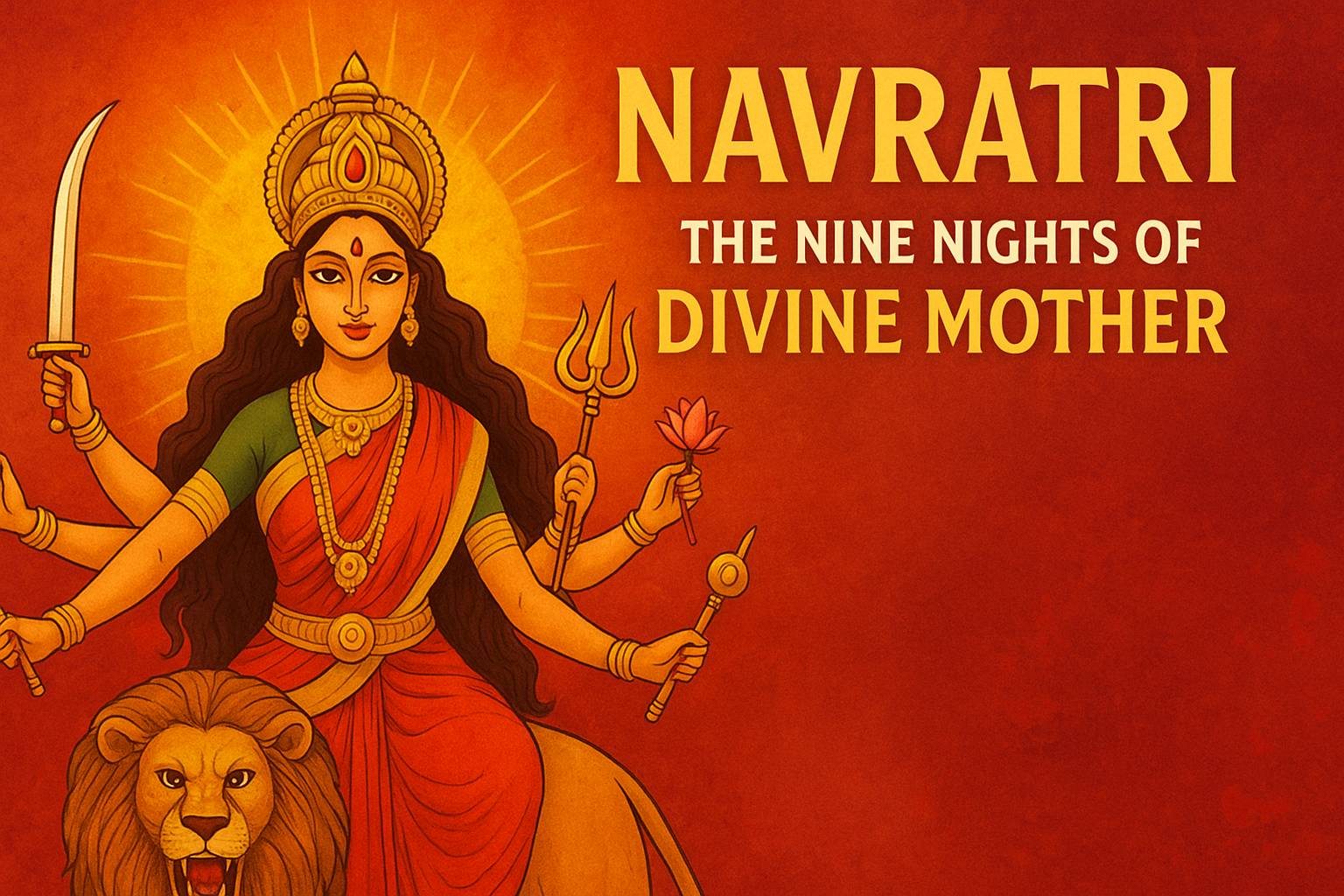Navratri is one of the most sacred and spiritually uplifting festivals celebrated in Sanatan Dharma. The word Navratri means “nine nights”, and during this period, devotees worship Maa Durga in her nine divine forms. These nine nights are a journey of devotion, faith, and self-purification, reminding us of the eternal truth that good always triumphs over evil.
Across India and many parts of the world, devotees come together with reverence and joy, performing rituals, fasting, singing bhajans, and remembering the eternal power of the Divine Mother. But Navratri is not just about rituals—it carries deep spiritual significance rooted in ancient stories, wisdom, and the cosmic play of Devi.
Table of Contents
The Spiritual Meaning of Navratri
Navratri is more than a festival; it is a sacred time to honor the feminine energy, known as Shakti, which sustains the universe. In Sanatan Dharma, Shakti is considered the source of all creation, power, and wisdom.
It is believed that during these nine nights, Maa Durga descends to Earth to bless her devotees, removing darkness, fear, and negativity from their lives. Each day of Navratri is dedicated to one of her nine forms, known as Navadurga. By worshipping these forms, devotees connect with different aspects of divine strength, courage, purity, and wisdom.
The Nine Forms of Maa Durga (Navadurga)
Each form of Maa Durga worshipped in Navratri represents a unique quality and blessing:
- Shailaputri – Daughter of the Himalayas, symbol of purity and devotion. She rides a bull and carries a trident and lotus.
- Brahmacharini – Goddess of penance and wisdom, carrying a rosary and kamandalu. She teaches the value of patience and devotion.
- Chandraghanta – Known for her bravery and courage, she adorns a crescent moon and rides a tiger, symbolizing protection from fear.
- Kushmanda – Believed to have created the universe with her divine smile, she is offered pumpkins during worship.
- Skandamata – Mother of Kartikeya (Skanda), seated with her child in her lap, symbolizing motherly love and compassion.
- Katyayani – Fierce warrior goddess, born to sage Katyayan, who destroys evil forces and blesses devotees with strength.
- Kaalratri – Fierce form of Durga, dark in appearance, who destroys demons and removes fear.
- Mahagauri – Pure, calm, and compassionate, she represents peace and serenity.
- Siddhidatri – The giver of siddhis (spiritual powers) and divine blessings, completing the cycle of Navratri.
By worshipping these nine forms, devotees believe they receive blessings of protection, prosperity, and inner transformation.
The Story of Maa Durga and Mahishasura
One of the most popular legends associated with Navratri is the battle between Maa Durga and Mahishasura.
Mahishasura, a demon blessed with the boon that no man could kill him, became arrogant and terrorized the three worlds. The gods, unable to defeat him, united their powers and created a divine feminine force—Maa Durga.
Armed with weapons from each deity, Maa Durga fought Mahishasura for nine days and nights. On the tenth day, she defeated him, symbolizing the victory of dharma over adharma (good over evil). This day is celebrated as Vijayadashami or Dussehra.
This story reminds us of the eternal power of the Divine Mother, who comes to protect her devotees and restore balance in the universe.
Rituals and Traditions of Navratri
Navratri is observed differently across India, but the essence remains the same—devotion to the Goddess. Some of the common traditions include:
- Fasting and Prayers – Devotees observe fasts, consuming only satvik food. This is believed to purify the body and mind.
- Kanya Pujan – On the eighth (Ashtami) and ninth (Navami) days, little girls are worshipped as living forms of the Goddess.
- Garba and Dandiya – In Gujarat and many parts of India, devotees celebrate with joyful dance rituals, symbolizing the cycle of creation.
- Durga Puja – In West Bengal, idols of Maa Durga are worshipped in grand pandals, with cultural programs, bhajans, and rituals.
These practices reflect both devotion and celebration, reminding us that worship can be joyful and life-affirming.
The 10 Mahavidyas – The Wisdom Goddesses
Beyond Navadurga, Sanatan Dharma also speaks of the 10 Mahavidyas, or the ten great wisdom goddesses. They are considered powerful forms of Adi Shakti, each representing a cosmic truth and spiritual lesson.
- Kali – The destroyer of darkness and ego, symbol of time and transformation.
- Tara – The guiding star, protector, and giver of wisdom.
- Tripura Sundari – The goddess of beauty, love, and bliss.
- Bhuvaneshwari – The mother of the universe, representing creation and cosmic order.
- Chhinnamasta – The self-sacrificing goddess, symbol of courage and transformation.
- Bhairavi – Fierce energy that destroys ignorance and awakens wisdom.
- Dhumavati – The widow goddess, symbolizing detachment and letting go.
- Bagalamukhi – The power to silence negativity and protect devotees from harm.
- Matangi – Goddess of speech, music, and knowledge.
- Kamala – Goddess of wealth and prosperity, closely linked to Maa Lakshmi.
These Mahavidyas remind devotees that the Divine Mother is both gentle and fierce, compassionate yet powerful, guiding us through the different phases of life.
The Significance of Navratri in Our Lives
Navratri is not only about worshipping the Goddess but also about self-reflection and inner growth. Fasting teaches discipline, prayers connect us to higher energy, and devotion strengthens our faith.
It is believed that those who observe Navratri with faith, devotion, and purity of heart receive divine blessings of peace, prosperity, and protection. The festival also inspires us to let go of negativity, overcome inner fears, and embrace positivity.
Conclusion
Navratri is a sacred time to celebrate the divine feminine energy that exists in all of us. The stories of Maa Durga and the Mahavidyas remind us of the eternal strength of Shakti, who protects, nurtures, and guides her devotees.
As we light lamps, sing bhajans, and bow our heads in devotion, let us remember that Navratri is not only about rituals but about honoring our inner spirit, expressing gratitude to the Divine Mother, and walking the path of righteousness.
May Maa Durga bless you and your family with peace, prosperity, and strength during this sacred festival.

